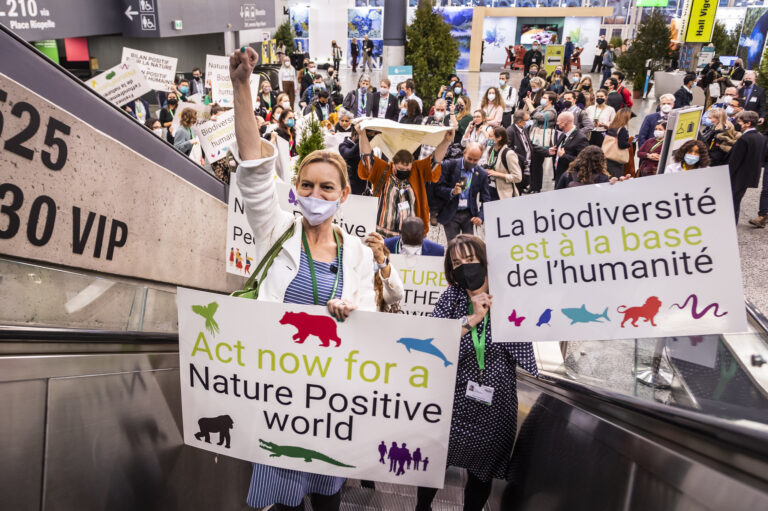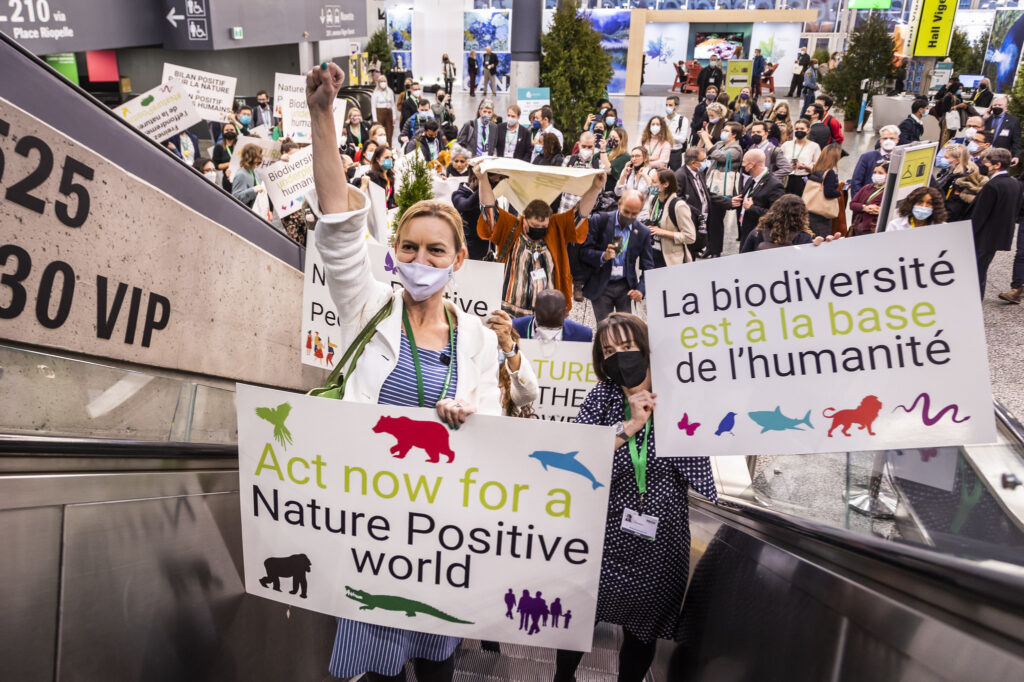
On 19 December 2022, and after about two weeks of sometimes tough negotiations, the participants of the United Nations Biodiversity Conference, COP 15, agreed on a final declaration in Montreal, Canada. In the ‘Kunming-Montreal Global Biodiversity Framework’ (GBF), governments have set out four overarching goals and 23 targets to be achieved by 2030 in order to address the loss of biodiversity and restore natural ecosystems.
The main goal of the agreement, known as 30×30, is to effectively conserve and manage at least 30 percent of the world’s land, inland waters, coastal and marine areas by 2030. Other key targets include:
- Having at least 30 percent of degraded ecosystems under effective restoration
- Reducing to near zero the loss of areas highly important for biodiversity
- Cutting global food waste in half and significantly reducing overconsumption and waste generation
- Phasing out or reforming subsidies which harm biodiversity (e.g. support for pesticide use or fossil fuel extraction) by at least 500 billion USD per year and scaling up positive incentives for conservation
- Mobilising at least 200 billion USD per year in domestic, international, public and private biodiversity-related funding including by raising international financial flows from Global North countries to Global South countries to at least 20 billion USD by 2025 and 30 billion USD by 2030
Trade offs were made and there has been criticism, e.g. regarding the manner in which the agreement was adopted, as well as some provisions being too vague or not going far enough. Still, it includes some important achievements.
No conservation without respect for Indigenous rights.

From an intersectional feminist perspective, it is worth highlighting that the framework calls for recognition of Indigenous and traditional territories as well as respect of the rights of Indigenous and local communities throughout several targets, even though it does not explicitly recognise Indigenous lands as a separate category of conserved area. In the process leading up to the declaration, Indigenous representatives and activists voiced concerns and advocated for a form of conservation that recognises their rights, roles and knowledge, e.g. during the March for Biodiversity and Human Rights. In the end, the International Indigenous Forum on Biodiversity issued a statement celebrating the GBF’s strong language on contributions, rights, roles and responsibilities of Indigenous and local communities. This is crucial as Indigenous groups protect 80 percent of the world’s biodiversity and past traditional conservationist approaches have had an exclusionary, racist and/or violent character. In some cases, they have ultimately come at the expense of their lands, rights and livelihoods. Moving forward, the standard model of conservation needs to be based on human rights and centre Indigenous and local communities in decision-making to be socially and environmentally sustainable and beneficial for all.
Towards gender-responsive and inclusive policy.

It is also thanks to civil society and global coalition building that the framework includes a stand-alone gender target, despite pushback from anti-gender actors. Target 22 aims to “ensure the full, equitable, inclusive, effective and gender-responsive representation and participation in decision-making, and access to justice and information related to biodiversity by indigenous peoples and local communities, respecting their cultures and their rights over lands, territories, resources, and traditional knowledge, as well as by women and girls, children and youth, and persons with disabilities and ensure the full protection of environmental human rights defenders”. In addition, the package of documents adopted at COP 15 comes with a Gender Plan for Action to support and promote State Parties’ gender-responsive implementation of the post-2020 global biodiversity framework. It is mentioned that the plan’s implementation will take an intersectional approach and prioritise the needs of all women and girls, particularly those facing all forms of discrimination. The text details concrete objectives and actions to ensure women’s rights to land and access to natural resources, address gender-based discrimination and violence linked to the use and conservation of biodiversity, increase and strengthen women’s effective, equitable, and full participation in decision-making, strengthen the evidence base, understanding and analysis of gender-related impacts of the GBF implementation as well as to allocate adequate human and financial resources to support its rights-based gender-responsive implementation.
Why is this important?
As a result of gender norms and differentiated roles, women often hold knowledge that is vital to preserving biodiversity and it has been shown that when women and vulnerable groups participate equally in decision-making, biodiversity conservation efforts become more effective and efficient. Thus, when it comes to informing effective policies, an intersectional perspective is necessary to both gain a more nuanced understanding of how gendered (and other) roles interact with the relationship between humans and the environment as well as ensure that those who hold key roles in preserving biodiversity for all of us are involved in decision-making processes accordingly.

We’ll continue watching this space.
As the framework is non-binding, it remains to be seen whether the international community will translate its unprecedented support for this declaration into meaningful and effective action. Civil society efforts ensured that the groundwork for inclusive biodiversity protection was laid and civil society will keep pushing for states to deliver on their promises.
Carolin Dietrich joined CFFP as a student assistant, specifically supporting our Climate Justice and Anti-Racism Programmes.
